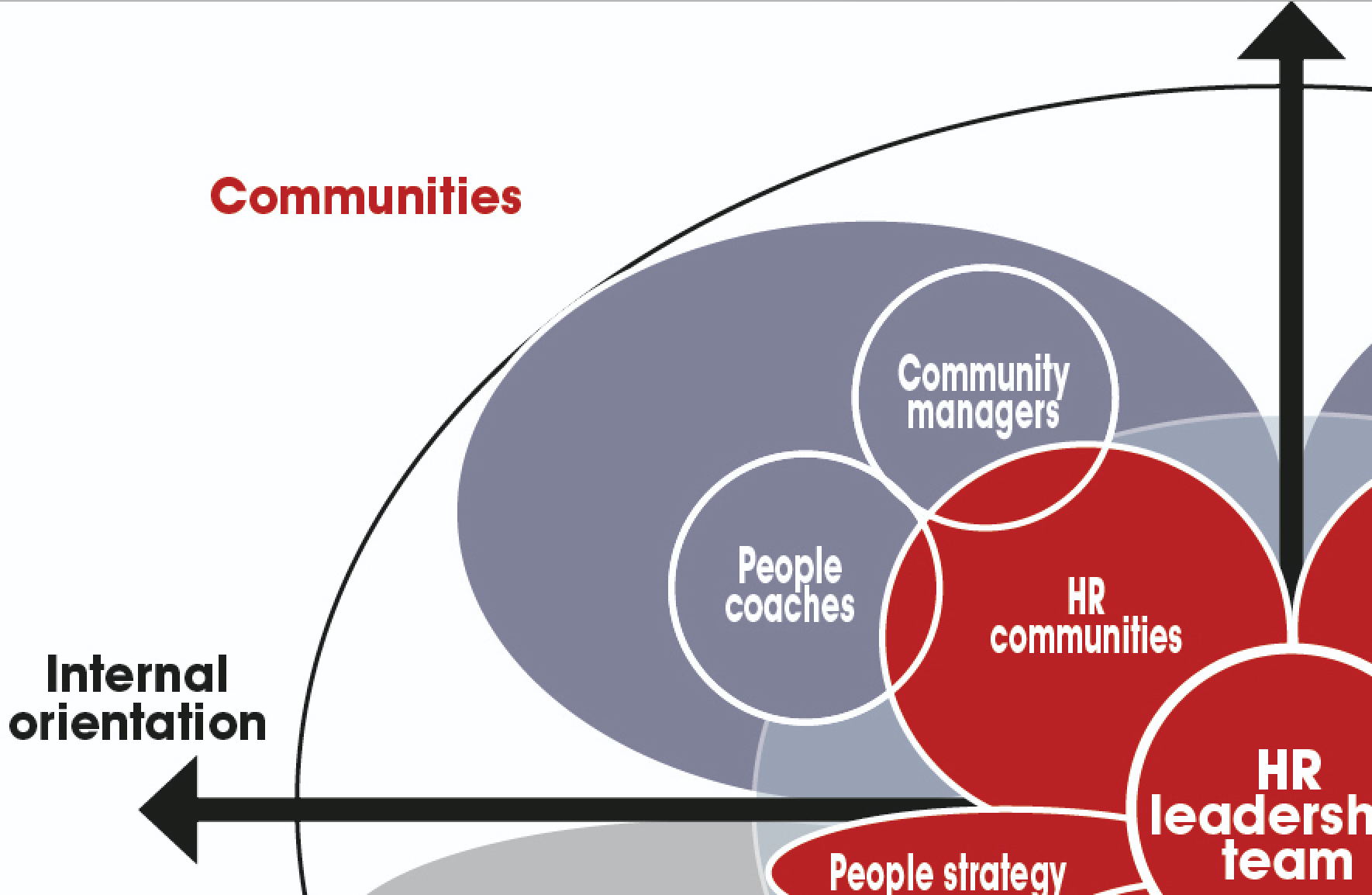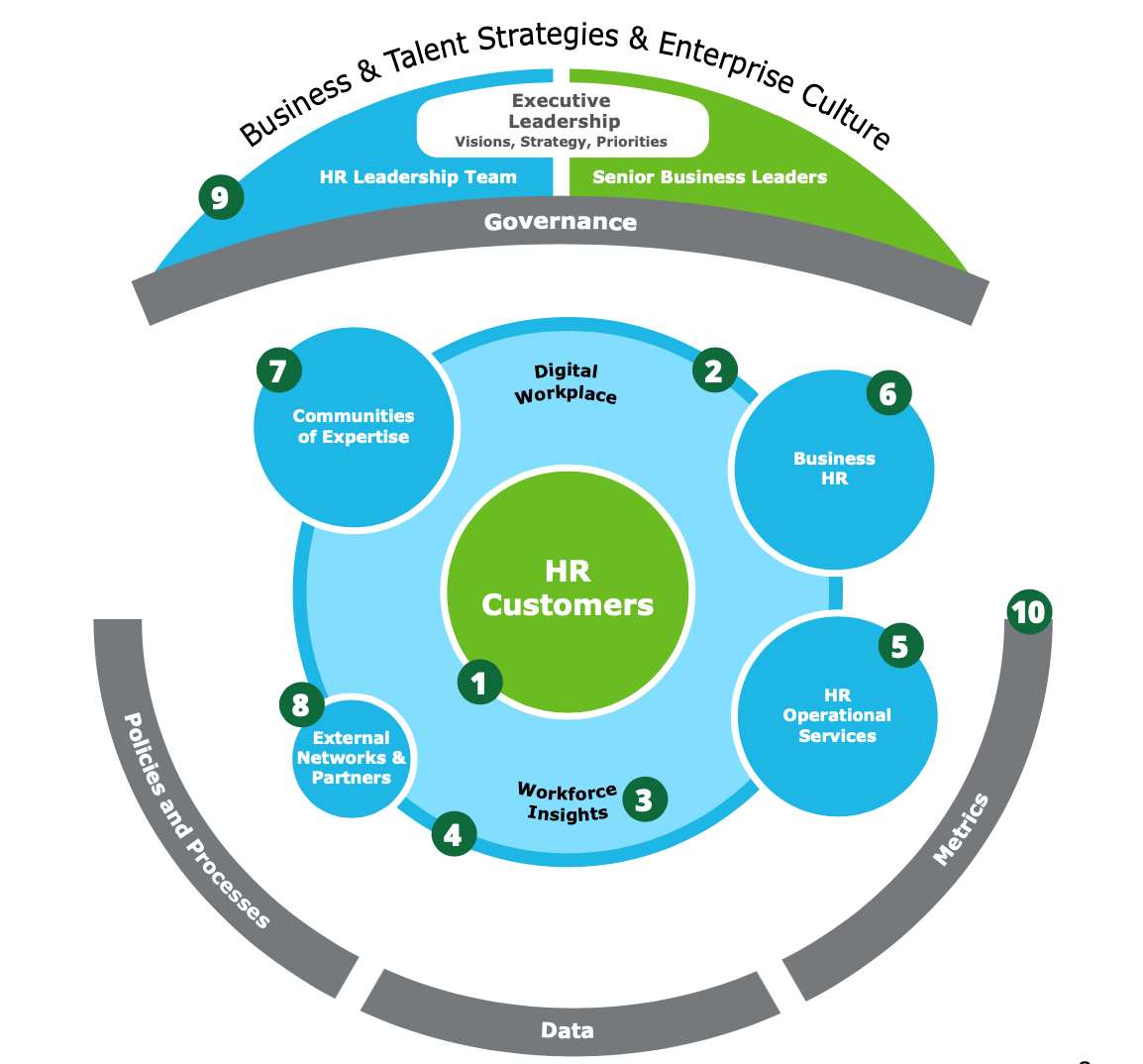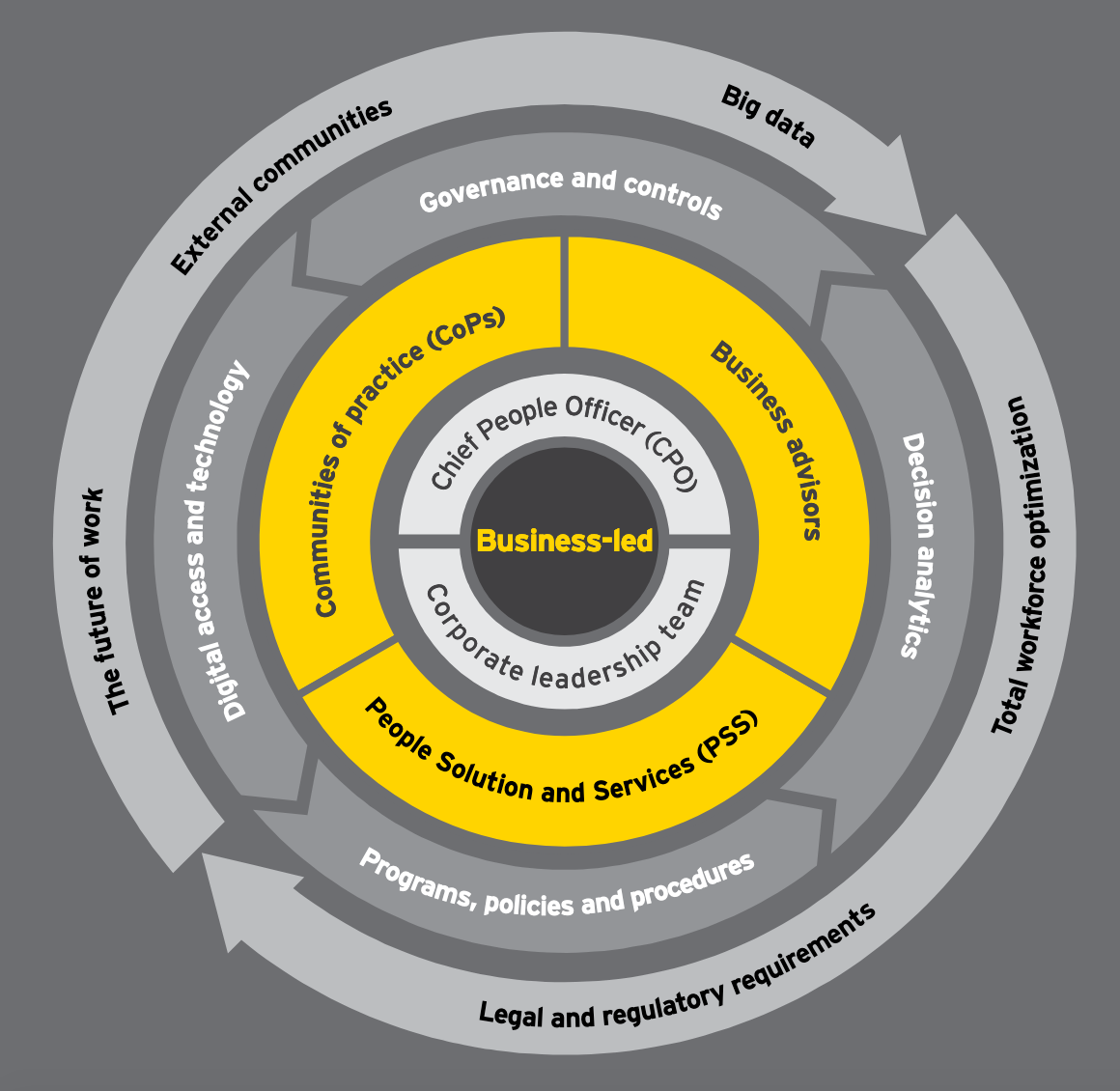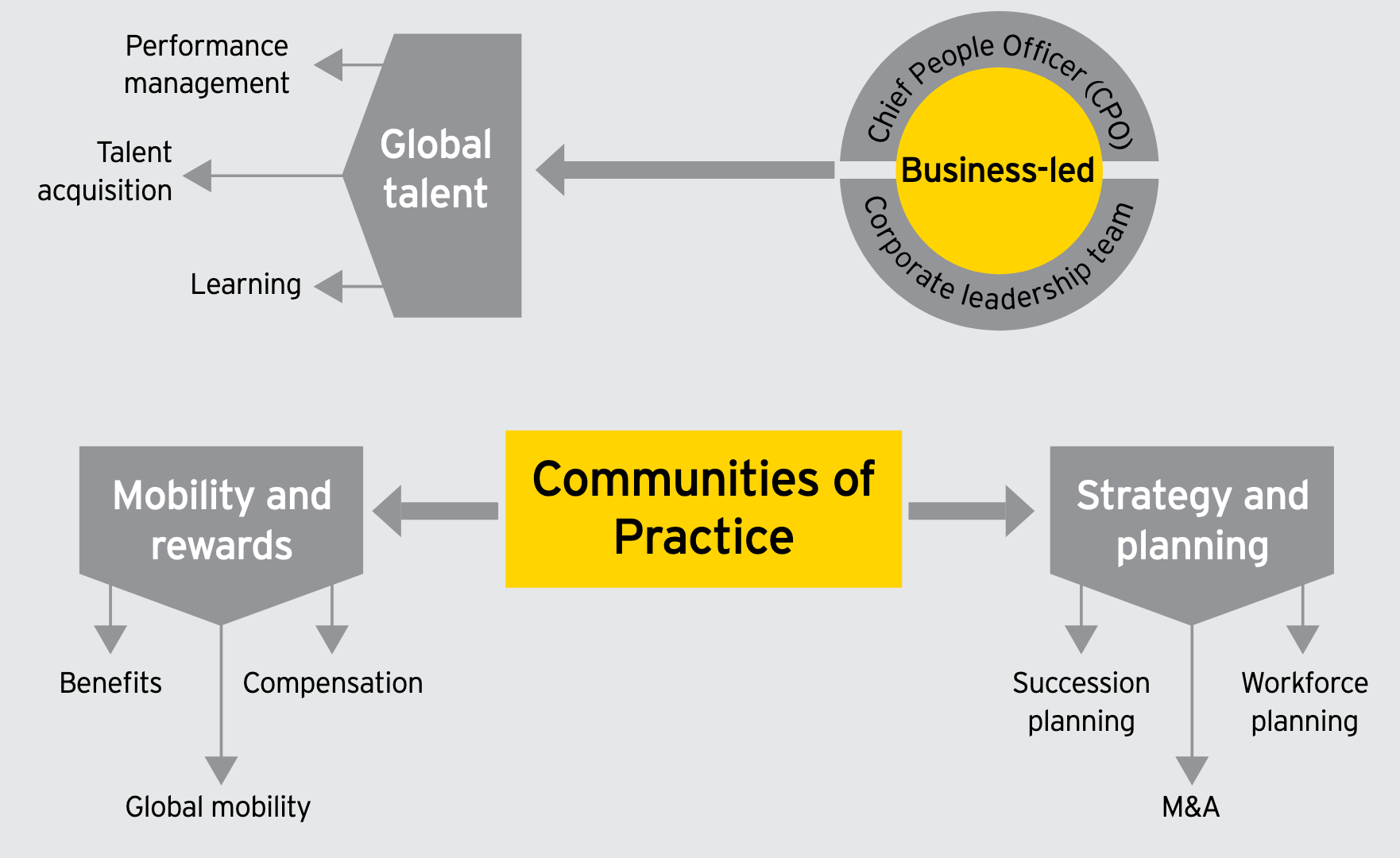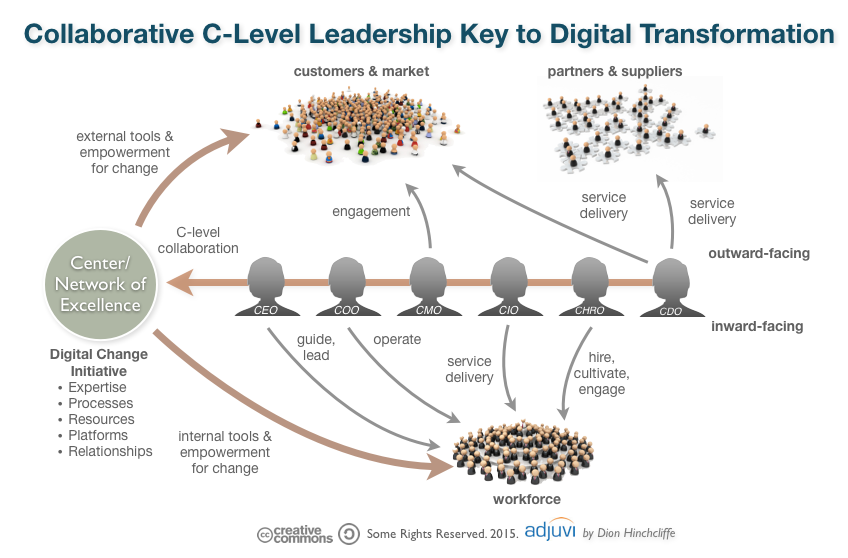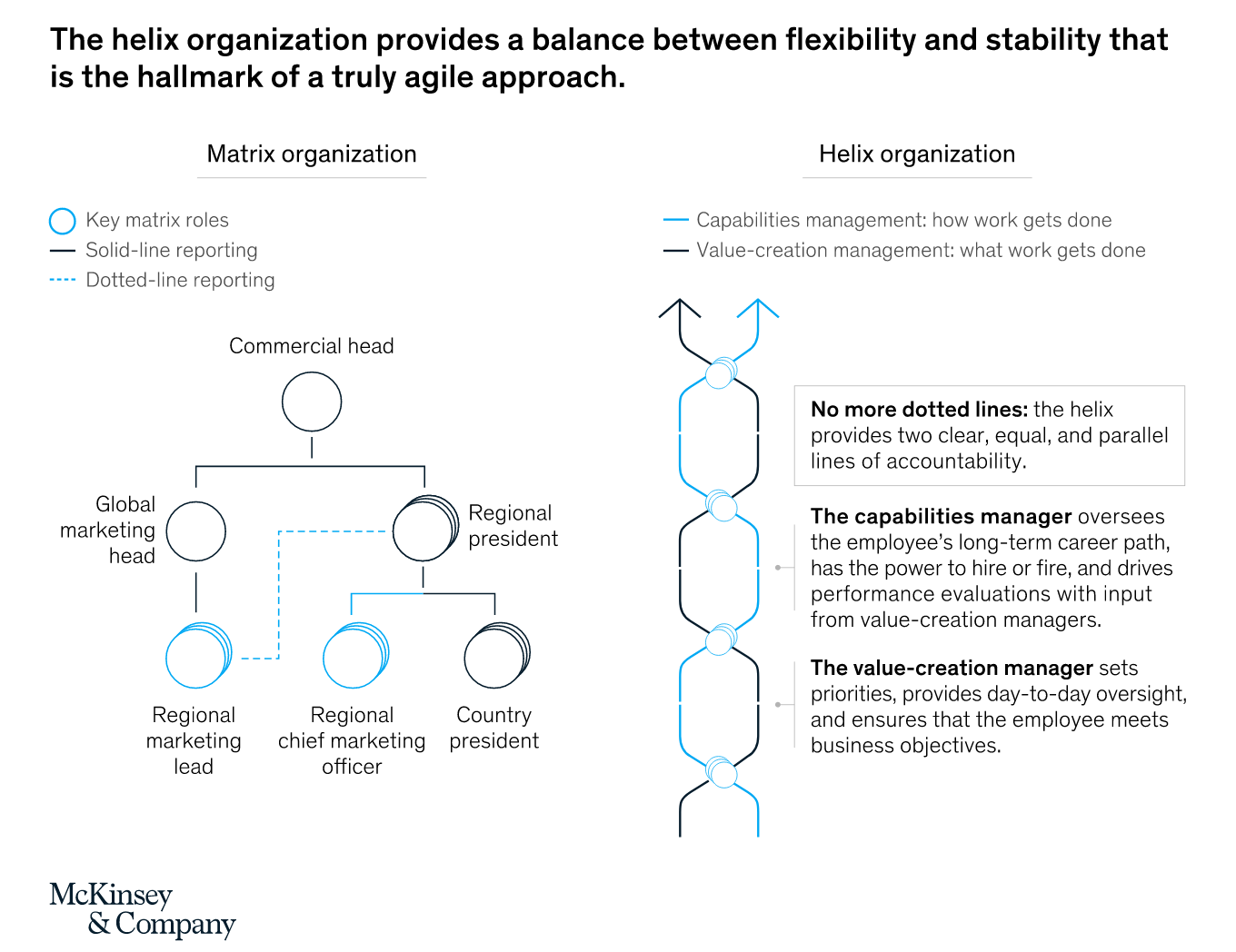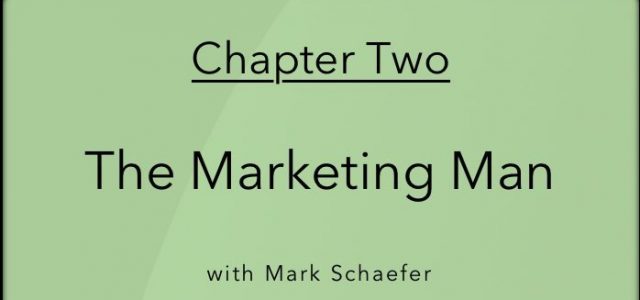I’ve recently written about the opportunity for new people-centric organisation forms in this article in last month’s HR Magazine, and this article on Linkedin: https://www.linkedin.com/pulse/choosing-organisation-forms-groups-jon-ingham, both based upon some of my book, The Social Organization.
I’ve now also applied this thinking to the HR organisation, building upon an article I co-authored with Dave Ulrich in 2016 to develop a new archetypal HR model which extends well beyond the traditional Ulrich model / three-legged stool.
This HR organisation or operating model is the Melded Network HR model and is profiled in this month’s HR Magazine and this article here. HR needs to follow the business, so if our businesses increase use of people-centric forms then the HR organisation needs to do this too.
My current mini-series of posts are to add a little more detail to this melded network HR model and the description in the HR Magazine article. I have already addressed the use of both functional centres and horizontal teams within the HR model and now move on to discuss the role of communities (and see this article about the increasing use of communities within the rest of the business too).
The above diagram focuses on the communities (internal orientation/people focus) quadrant of the Melded Network HR Model (see this article for the full model).
Key:
- HR communities are shown in red as these are part of the core HR model
- The large dark grey oval represents communities across the whole business and includes community managers and people coaches linked to communities within HR or the rest of the business. All these communities, community managers and people coaches could be part of the broader HR model (see below).
HR may not need so many specialists, but it still needs specialist expertise. However, with the rise of professional interims and gig working, much of this expertise can be rented or brought in when necessary as contingent expertise, rather than being owned by HR.
This can also include the use of consultants and external advisors, as well as people from the rest of HR and the rest of the business. In addition, there is often no need for either these varied contributors or the remaining smaller group of permanent specialists to be pulled together into centres.
Centres are therefore being reborn as communities and these already feature in recommended HR models from both Deloitte and EY, although these are still based largely on the three legged stool:
- Deloitte’s Operational Services, Business HR and Communities of Expertise (5, 6 and 7) are still broadly the service centre, business partners and specialists
- As are EY’s PSS, business advisors and CoPs (I talk about communities of performance rather than communities of practice)
This shift is being seen in other functions too, eg Dion Hinchcliffe writes and speaks about networks (I think he means communities, the way I define them) of excellence taking over from centres in IT / Digital Transformation:
Communities help gather people with common interests in less formal ways than centres, tapping people’s intrinsic motivation to develop new opportunities for the organisation. They should include important strategic areas including organisation design, organisation development, diversity and inclusion, engagement, people analytics, HR technology, etc.
They may also be smaller than the centres they replace, for example, there could be a community focusing on employee benefits rather than the broader category of reward. This will enable people to join communities in the areas they are most passionate about.
Communities may also extend across broader areas, meeting a growing need to deal with key business topics such as productivity, innovation and customer centricity, etc.
People will often be encouraged to participate in more than one community to develop broader understanding across the organisation, contribute in new ways, and develop personalised career paths.
Communities can also act as ‘homes’ for project staff when they are not active on projects, and to provide a longer-term sense of belonging on top of the specific focus developed on these projects.
This is the type of flexible resource pool arrangement traditionally used by professional services firms, but replaces more bureaucratic functional groups with looser and more people-focused communities.
This arrangement also solves common problems such as whether to place Internal Communication with corporate communication or in HR. Communities need to bring together people who have common interests, which in this case will be around different forms or approaches to communication.
People from this community may then be pulled into project teams focused on messages to and involvement of employees, and separately, onto similar projects for customers / other external stakeholders.
Just as with projects, HR communities will probably form a subsection of a broader business community group. HR communities will need particularly strong links to communities in other central services areas, eg IT and Property.
However, unlike teams, all these communities may sit within the broader HR organisation. Teams are about doing the work of the business and therefore need to be part of the rest of the business. Communities are mainly about helping people reach their potential and optimise their contribution, using their unique passions and skills.
It may, therefore, make sense to see them as parts of HR. (For example, if there is a role heading up community management across the business, this role and its related responsibilities may sit within HR.)
This extends a small trend in several organisations where HR has got so fed up with the poor quality of line management compared to the strategic importance of people, and so HR has taken people off the business and has said it will look after them, and that managers can have the people back for projects.
(We did this when I was an HRD at EY too – our Trainee Development Group (TDG) was part of HR and looked after the development of graduates, loaning them out to the business divisions, until they passed their accountancy exams.) This makes even more sense to do when functional centres are replaced by looser, less formal communities.
Community Managers
Both business and HR communities will need leading or enabling, perhaps quite informally by the people who emerge as central connectors within the communities. Alternatively, organisations may employ specialist community managers (really facilitators), who once again may work from within HR.
Community management is in many ways the new HR – traditional HR has been about individual employees, new HR needs to be about both individuals and groups, and particularly the way that people fulfil their potential through communities.
People Coaches
In some organisations, line management is disappearing, sometimes being replaced by self-management, and sometimes with the line role being split between project managers and people coaches who look after people’s longer-term development and career needs (see McKinsey’s new article on the Helix Organisation). Where this is the case, it may be appropriate to link these coaches to people’s main communities. These coaches may also work within HR.
Note that I define HR as a department perhaps more properly defined as Human Relationships, which may itself involve more responsibilities, and therefore people and skills, which are currently often distributed across the organisation.
Article by channel:
Everything you need to know about Digital Transformation
The best articles, news and events direct to your inbox




